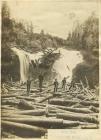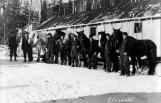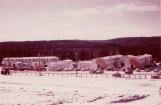1
Log Jam Tetagouche FallsCirca 1910
Tetagouche, New Brunswick,Canada
 Credits:
Credits:Bathurst Heritage Museum
2
A big load of logs being moved on an ice roadCirca 1915
Near Bathurst, New Brunswick, Canada
 Credits:
Credits:Bathurst Heritage Museum
Jean Babin Album
3
Lazare Roussel's lumber camp on the Forty-four Mile BrookMarch, 1921
Near Bathurst, New Brunswick, Canada
 Credits:
Credits:Bathurst Heritage Museum
Rod O'Connell
4
Unidentified cook in a lumber camp cookhouse of the Bathurst Lumber Co.Circa 1920
Near Bathurst, New Brunswick, Canada
 Credits:
Credits:Bathurst Heritage Museum
Rod O'Connell
5
Flushing Dam in the Robert K. Allen Collection.1937-1938
Near Bathurst, New Brunswick, Canada
 Credits:
Credits:Bathurst Heritage Museum
Robert K. Allen Collection
6
A Typical "Jobber's" Log Camp on the Company Limits1942
Near Bathurst, New Brunswick, Canada
 Credits:
Credits:Bathurst Heritage Museum
Valmond Boudreau Album
7
Wanted - Bilingual Horses!1942
Near Bathurst, New Brunswick, Canada
 Credits:
Credits:Bathurst Heritage Museum
Sylvia Vienneau
8
Popple Depot after a fresh fallen snow.Circa 1951
Near Bathurst, New Brunswick, Canada
 Credits:
Credits:Bathurst Heritage Museum
Don Henry Album
Bathurst Power and Paper Company
9
The Newly Constructed "Central Camp" of Rogers LakeNovember, 1965
Near Bathurst, New Brunswick, Canada
 Credits:
Credits:Bathurst Heritage Museum
Bathurst Woodlands Album